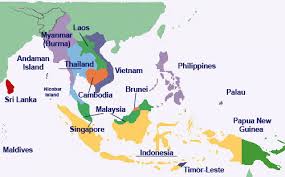
Mixed Motivations and Mixed Blessings: Chinese Investments in Southeast Asian Energy and Mineral Resources
By Philip Andrews-Speed
ISEAS Perspective 2105 No.40, (Institute of Southeast Asian Studies, September 2015)
Available at: Click here for full report
EXECUTIVE SUMMARY
- Multi-national energy and mining companies used to play a significant role in exploring and exploiting Southeast Asia’s energy and mineral resources. Their involvement has steadily declined as larger deposits have become available for exploitation elsewhere in the world, and under more attractive fiscal and regulatory conditions. Their place is progressively being taken over by state-owned and state-backed enterprises from different Asian countries, especially China.
- Energy and mineral companies play an important part in China’s economic engagement with Southeast Asia. Although Southeast Asia is not a preferred region for Chinese overseas resource investments, it offers distinct locational advantages to China’s energy and mineral companies and to the government.
- Most Chinese companies undertaking the projects are wholly or partly owned by the government at either central or local levels, though private companies do engage in smaller projects. Corporate objectives include securing energy or resource supply chains, increasing or diversifying their asset base, and enhancing their profits or market share. The motivations of the government range from straightforward support of the companies for the purpose of industrial strategy and security of resource supply, to development assistance, diplomacy and regional strategic positioning.
- Chinese investment in the oil and gas sector in Southeast Asia is part of the national oil companies’ strategies to build themselves into international corporations. CNPC/PetroChina has also been active in the downstream oil industry, buying into the Singapore Petroleum Corporation and building pipelines across Myanmar to bring oil and gas directly to China.
- Chinese companies have two main objectives in Southeast Asia’s hydropower sector: to win construction contracts and thus sustain their businesses, given the slowing down of dam construction in China; and, in some cases, to transmit the electricity back to China. The Chinese government supports these initiatives, sometimes with financing through the state policy banks, for a mix of economic and diplomatic reasons. The highest level of activity is in Myanmar and in the Mekong River Basin (Laos and Cambodia), where hydropower resources are abundant.
- China has a large import requirement for certain categories of minerals, which determines the pattern of overseas direct investment by the nation’s mining companies, including in Southeast Asia which holds significant deposits of nickel, bauxite, copper and coal.
- The rapid surge of Chinese companies to extract the resources of its neighbours in Southeast Asia has not met with unalloyed success on account of a combination of the limited international experience of Chinese enterprise and poor standards of governance on the part of the host nations. Some cases have led to disputes, project delays, financial losses and occasional violence, leading to a growing level of distrust and reputation loss for China. Such cases can also undermine trust between communities and their own governments.

